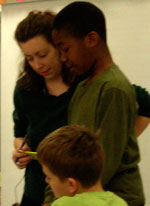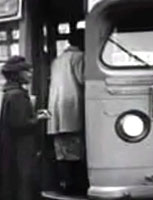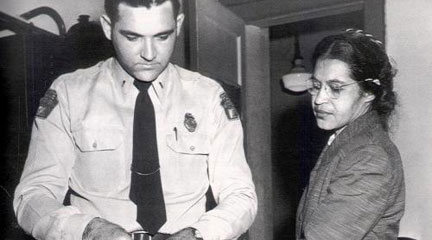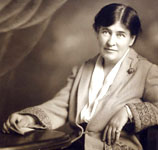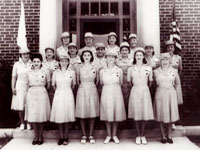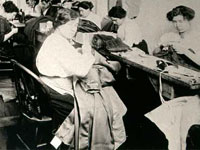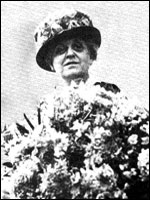Based on A Woman for President, here's an example of a row from the data chart: 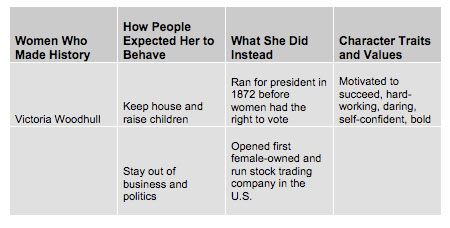
In the Classroom: Writing Projects—Historical Context
The two projects below focus students' attention on envisioning the historical setting. Student handouts are provided for each project.
One: Photograph Album with Captions
Ask students to create an imaginary photo album for one of the women. Using "Photo Album from the Past," have students draw interesting and important moments from the woman's life. Visual material downloaded from the internet can be included to make these photos more realistic. Under each picture, students can supply captions for the photo pointing out interesting details. Here is an example of a "photo" and caption from the album of Victoria Woodhull: 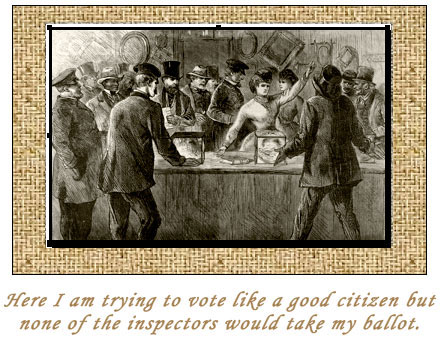
Two: Imaginary Interviews
With a partner, have students prepare for an interview with one of the women. First, students brainstorm what questions to ask, then write their questions down and provide an answer the woman would give. Have the students practice giving the interview before presenting to the class. Completed written interviews can be illustrated and collected for display or made into a class book. Sample interview questions could include:
-
- In your day, what did people expect you to do?
- What was your biggest accomplishment? Why does it make you proud?
- How would you describe yourself?
- What qualities do you respect in other people?
Ask students to add additional questions. See an example of an interview with Victoria Woodhull in the Examples Packet.
In the Classroom: Writing Projects—Character Traits and Values
The two projects below focus attention on the character traits and values of the women studied. Student handouts are provided for each project.
One: Character Sociogram
This is a way to show how a person thinks and behaves and how people respond to them. An example from the packet shows Victoria Woodhull's interactions with several contemporaries. The words on the arrows show the feelings and actions of one person toward another. Though only four people are shown (besides the woman in the center), more people may be added. Using one of the shared biographies, model how to make a sociogram with the whole class. Have student partners complete a sociogram for one of the women studied. After students complete several sociograms, discuss the common traits and values of women who made history. See an example of a sociogram based on the life of Victoria Woodhull in the Examples Packet.
Two: Concept Circles
This strategy teaches students to see the connections between words. Using words that explore character traits and values, this vocabulary exercise gives students the opportunity to describe the women using new, or recently learned, words. From the handout provided, place a word or phrase describing character traits and values for one of the women studied in each section of the circle. Skim the biography for these words and phrases. Have student partners discuss how each word or phrase helped them understand that person. After the discussion, have students write descriptions of the woman, describing the obstacles she faced and how she overcame them. Ask students to use vocabulary from the concept circle in their descriptions. See an example of a concept circle about Victoria Woodhull in the Examples Packet.
Common Pitfalls
- Even though the recommended books are picture books, it may take more than one class period to read aloud. Don't rush through the book. Provide enough time for background information and student comments on the book.
- Students often want to report on everything they have learned after listening to a read-aloud. Praise your students for learning new information, but then focus them on the chosen topics (historical context and efforts to promote social change).
- For written assignments, make sure students use information from books rather than made-up information. Have books available so students can refer to them.

